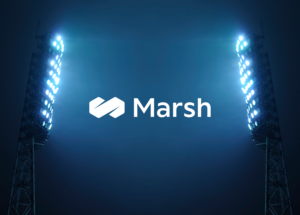As Instabase announces the launch of AI Hub – a repository of AI apps focused on content understanding and a set of generative AI-based tools to transform the customer experience – we caught up with Bas de Goei, Instabase Insurance Leader, to find out more.
Headquartered in San Francisco, Instabase is one of the most dynamic applied AI companies emerge from the recent flurry of West Coast startups in the US.
Founded in 2015 by CEO, Anant Bhardwaj, the company provides a unified platform with artificial intelligence (AI) and workflow automation capabilities that allow organisations to solve their most pressing business challenges at scale.
According to its developers, the newly launched platform, called AI Hub, is a game changer when it comes to handling complicated content. This is because the suite enables any individual to instantly have interactive conversations, get answers to questions, summarise and more from content such as documents, spreadsheets, and even images. As of this launch, anyone can now try AI Hub.
From tax files to insurance claims, to receipts, invoices, customer data, and more – the AI Hub enables anyone to chat with their content and receive answers as if speaking to a knowledgeable expert on the materials.
Instabase’s Core Aims:
Since its founding, Instabase’s platform has had a rich history of incorporating AI innovation into its design, including content digitisation, neural networks, and most recently transformer-based, layout-aware large language models. Instabase’s AI Hub has three components. They are:
- AI Hub Converse: Enables users to seamlessly chat and analyse any document set. From financial data to legal contracts, to university research papers, and more, users can quickly ask questions about the documents and identify the information they need. For example, take the use case of identifying key terms and summarising a contract. With Converse, users can take complex and long contracts and summarise, translate, and analyse information in the language of their choice.
- AI Hub Build: Enables users to build repeatable end-to-end workflows with documents as input. Instantly classify, extract, and run analysis to build an end-to-end application. For example, with Build users can analyse and summarise information from printed or handwritten receipts, tax documents, and invoices to automate repetitive tasks.
- AI Hub Pre-Built Apps: The Pre-Built Apps enable users to swiftly automate common processes such as income and identity verification, client onboarding, passport, and licence verification, and others that enable multi-document understanding. In the future, users will also be able to publish and share apps they develop with the AI Hub community.
Instabase currently uses an open ecosystem that combines AI breakthroughs from research labs with a low-code interface and deep industry expertise to help businesses drive transformational outcomes in their day-to-day processes. The enablement of large language models (LLM) and layout understanding in Instabase’s platform also provides users with the means to build custom solutions to understand any document, within minutes.
Bas de Goei of Instabase, tells us more.
How did the idea behind AI Hub emerge – and how long has this project been in the pipeline for Instabase?
Since its founding, Instabase’s platform has had a rich history of incorporating AI innovation into its design, including content digitization, neural networks, and, most recently, large language models. Hence, the latest innovations in large language models represent yet another step-function in the ability to approach unstructured data that we were able to quickly incorporate into our modular design once they were released. Large language models (LLMs) are capable of answering content-related questions without any fine-tuning, eliminating the need for laboriously annotating, training, or collecting training data. Consequently, we were able to take this technology and package it into the form factor of AI Hub, enabling anyone from an enterprise to a professional to access it.
What have you learned from the development process of AI Hub – and what are your predictions regarding its potential use cases?
In building AI Hub, we have learned that this technology significantly lowers the thresholds for developing advanced automated workflows for unstructured data, making AI much more accessible to individuals and small businesses. In the past, enterprises were the ones who typically had the machine learning resources, financial resources, and developers to build such solutions. However, now any individual insurance agent or broker can leverage these solutions, which will dramatically enhance their capacity, increase quality, and lower costs.
AI is the hot topic right now, with Generative AI taking centre stage. What are your thoughts on its uses in the insurance space?
The large language models underpinning well-known products like OpenAI’s GPT-4 are incredibly good at understanding complex documents. Previous technologies, such as templates and deep learning, required numerous training samples to comprehend lengthy medical documents or intricate legal documents. However, these models now require effectively zero samples.
This breakthrough opens up various use cases, including more advanced life insurance underwriting and actuarial tasks such as identifying unfavourable clauses in policy contracts within a portfolio of thousands of policies.
Moreover, these models not only understand intricate relationships between texts but also possess a generative aspect. In the insurance industry, this opens up possibilities for more customer-friendly chatbots and more intelligent claims processes that can instantaneously request missing or incorrect data.
It also creates opportunities for content generation, such as draft quotation documents or draft policies for underwriters to review based on a submission. We are merely scratching the surface, as the opportunities are limitless.
Join Instabase in New York at ITI USA 2023
To find out more about Instabase’s latest strategies and innovations, join Bastiaan De Goei, Insurance Leader for Instabases at Insurtech Insights USA 2023 on June 7th and 8th, at the Javits Center in New York, where he will be taking part in the following panel: ‘The Technologies Reimagining Complex Claims Handling’To find out more, click here








